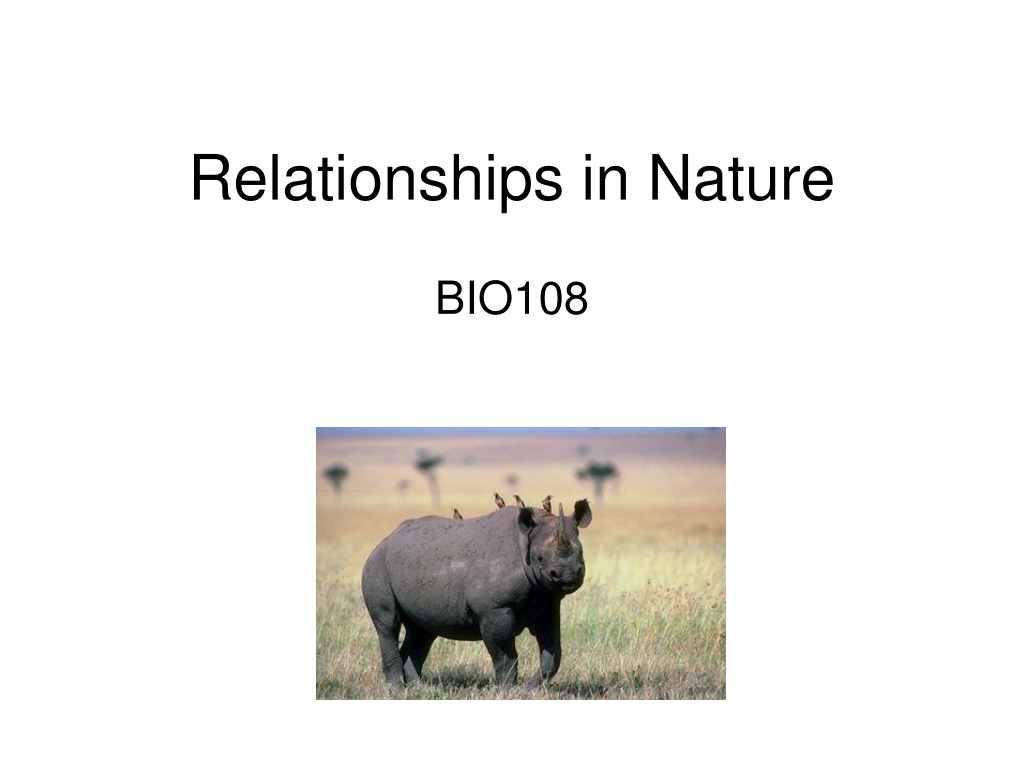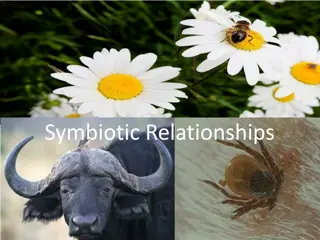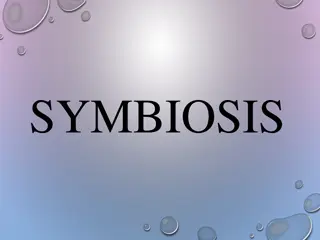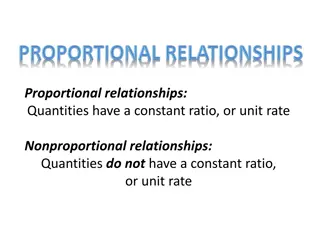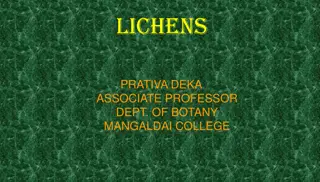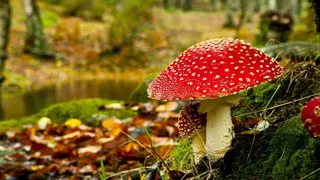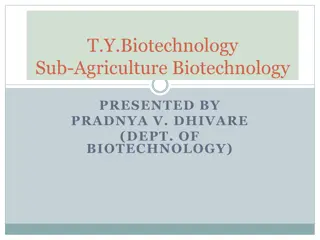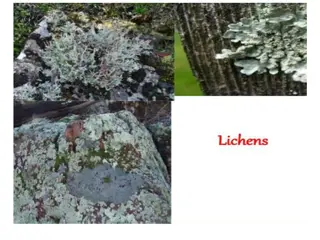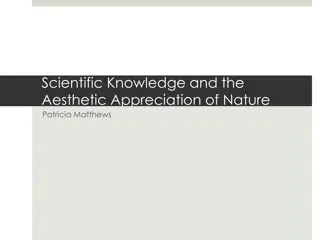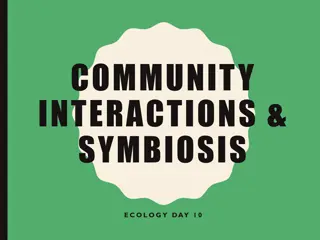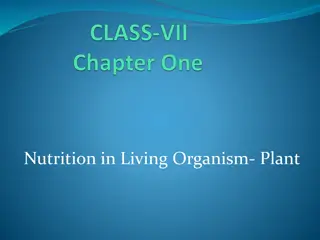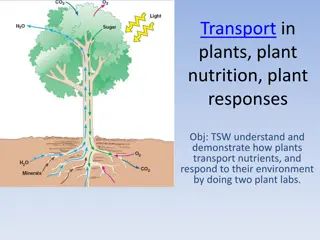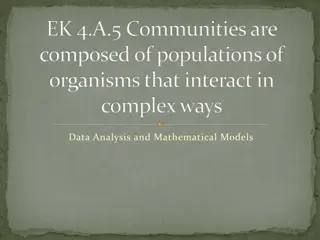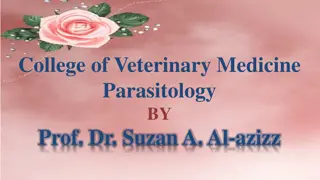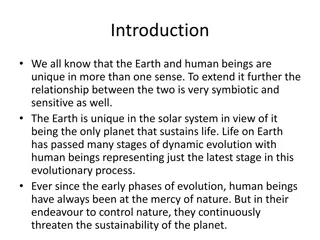Understanding Symbiotic Relationships in Nature
Explore the fascinating world of symbiosis through various examples like the partnership between a Nile crocodile and a crocodile bird, the mutual benefit of a buffalo and an oxpecker bird, and the intricate connection between a hermit crab and a sea anemone. Discover how different species coexist and thrive together in the animal kingdom, showcasing nature's remarkable interdependence.
Download Presentation

Please find below an Image/Link to download the presentation.
The content on the website is provided AS IS for your information and personal use only. It may not be sold, licensed, or shared on other websites without obtaining consent from the author. Download presentation by click this link. If you encounter any issues during the download, it is possible that the publisher has removed the file from their server.
E N D
Presentation Transcript
Relationships in Nature BIO108
Symbiosis Living together A partnership Two different species Both partners benefit mutual benefit
Animal Kingdom Nile crocodile & crocodile bird Hermit crab & sea anemone Buffalo & oxpecker Shark & remora fish
Crocodile & Bird Nile crocodile Usually eats animals Allows bird to walk around its mouth Crocodile bird Cleans parasites in croc s teeth Removes and eats scraps of food Eats harmful leeches and parasites
Hermit Crab & Sea Anemone Hermit crab protects the crab Sea anemone Gets leftover food http://www.ms-starship.com/sciencenew/symbiosis.htm
Buffalo & Oxpecker Buffalo Lets the bird eat Oxpecker Eats ticks and other parasites off skin Warns buffalo of danger http://www.pbs.org/wnet/nature/enemies/partners.html
Shark and Remora Fish Shark Lets the fish eat Remora Fish Eats parasites Gets the shark s leftovers
Lichen Slow growing plants Partnership: fungi & algae Neither could live alone
Relationships Phoresis Commensalism Mutualism Parasitism
Phoresis Loose association One organism is smaller than other Larger organism used for transport Dung beetles and cow dung
Commensalism eating together at the same table Only one member benefits sharing space, defense, shelter, food Neither will die if relationship is ended Shrimp & sea cucumber http://www.ms-starship.com/sciencenew/symbiosis.htm
Mutualism Both organisms derive mutual benefit Intimate and obligatory Neither can survive without the other Example host and parasite Tickbirds and rhinos Clownfish & sea anemone
Parasitism Not symbiotic Causes harm to host
This powerpoint was kindly donated to www.worldofteaching.com http://www.worldofteaching.com is home to over a thousand powerpoints submitted by teachers. This is a completely free site and requires no registration. Please visit and I hope it will help in your teaching.
